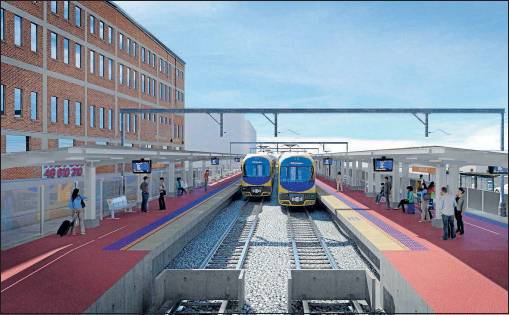Flaws in plan to run light rail down Hunter Street, says Newcastle Herald
 IT IS astounding that the government is ripping up the rail line and proceeding with its proposed replacement, light rail in Hunter Street, when yet another secret report discloses that the business case for that project is flawed.
IT IS astounding that the government is ripping up the rail line and proceeding with its proposed replacement, light rail in Hunter Street, when yet another secret report discloses that the business case for that project is flawed.
The Hunter Street project failed seven out of the nine criteria, against which it was considered by three independent experts including the “value for money’’ criterion ( Herald , “Case for light rail is flawed”, 9/12). Such an evaluation would normally lead to a project being abandoned.
This report confirms another secret report by the government’s own transport experts, disclosed in Document 71 Cabinet papers, which listed adverse repercussions of light rail in Hunter Street, including a slower journey time which would deter potential passengers, traffic congestion and business interruption. It concluded that light rail in the existing rail corridor would be far superior and recommended that it be implemented for a cost of $100 million less than the Hunter Street proposal.
That report really amounts to a business case in favour of light rail in the corridor. The unsuitability of light rail in Hunter Street is confirmed by the report, ( Herald , 27/11) that two prospective tenderers for privatisation of public transport may prefer buses to light rail in Hunter Street.
Despite the availability of buses from Hamilton it is obvious that since rail truncation, there are significantly more cars on the road and traffic congestion has increased, as has parking difficulty. So with light rail in Hunter Street and buses so discredited, light rail in the corridor, which has the endorsement of government transport experts, appears to be the superior choice.
For a light rail project to be viable it must be integrated with the total rail system including heavy rail and not be confined to just two kilometres along Hunter Street. Accordingly any interchange must be designed for light rail to run on the existing tracks west of the interchange, to enable extensions to Callaghan, Jesmond, Wallsend, Glendale, John Hunter Hospital, Maitland and the airport. Keeping light rail in the existing corridor will better facilitate these extensions.
It is not only more economical to use existing rail tracks and existing easements from near Maud Street to get to these western extensions but it is vital to consider potential customers such as university students, who would prefer a faster journey and would avoid a circuitous on road route route through the suburbs.
It is vital that the government establish an overall transport strategy for Newcastle and the Lower Hunter, so that decisions are not made now which would preclude future implementation of the strategy. Importantly there should be provision for hybrid diesel electric tram /trains to be the preferred vehicles due to their ability to accelerate and decelerate quickly.
The government should review their proposals so as to keep capital expenditure as low as possible and attract sufficient patronage to earn a reasonable return on capital. This process could lead to an interchange at Hamilton or Woodville Junction rather than at Wickham and light rail running along the rail corridor to Newcastle Station. This would cost about $200 million less than the current government proposal.
Light rail to Newcastle Station would only require two tracks to be retained. It would enable some reasonable development alongside or over those tracks with buildings designed accordingly.
Republished from the Newcastle Herald, 11 December 2015.
Written by Alan Squire, Convener of Hunter Transport for Business Development.

